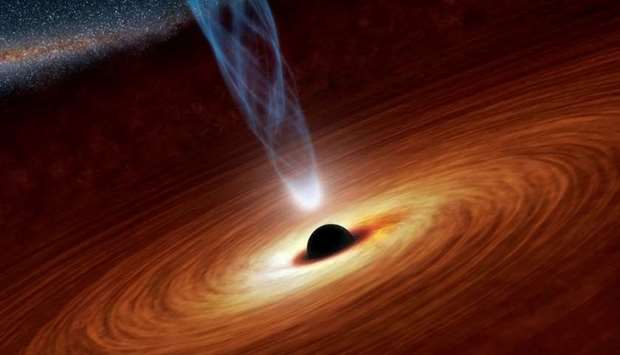Astronomers who have been using a global network
of telescopes to research black holes will present "a groundbreaking
result" on Wednesday that could transform the understanding of the
mysterious objects.
The Event Horizon Telescope (EHT) project has been working for years
to photograph the edge of a black hole for the first time.
The collaborative effort, involving scientists from all over the
world, last week scheduled multiple simultaneous press conferences to
announce its first results.
The US National Science Foundation (NSF), one of the organizations
sponsoring the EHT, said the results could transform the
understanding of black holes, gravity and even the universe.
Astronomers believe black holes, very dense objects with a
gravitational field so strong that nothing that approaches its edges
can escape, exist in nearly every galaxy.
As everything around a black hole, including light, gets pulled into
the object's gravitational force, they can't be observed directly.
However, it is possible to study them by detecting their effect on
other matter nearby, which is what the EHT is attempting to achieve.
EHT astronomers are linking telescopes to record interference around
two supermassive black holes in the middle of the Milky Way.
The
project aims to put into focus the event horizon of the two objects,
creating an image of the boundary of the black holes.
Albert Einstein first predicted the existence of the objects in his
theory of relativity.
International / US/Latin America
Astronomers to announce 'groundbreaking result' in black hole project

A supermassive black hole with millions to billions times the mass of our sun is seen in an undated NASA artist's concept illustration. REUTERS/NASA/JPL-Caltech/Handout/File Photo


